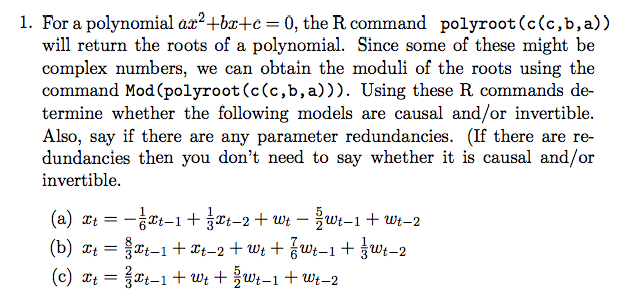
Compute the module (||), if > 1 we remove it. If youre running the Vcenter Appliance you can also check the log files here on the server: /var/log/vmware/vpx/. If the length of p is n+1 then the polynomial is described by: Rank-1 array of. The values in the rank-1 array p are coefficients of a polynomial. A summary of the differences can be found in the transition guide. The number of the degree of a polynomial is equal to the number of roots it had in its contruction. Since version 1.4, the new polynomial API defined in numpy.polynomial is preferred. Poly Roots Finder - Find Roots of Polynomials: Poly Roots Finder allow you to find the real or complex roots from the 2nd until 20th degree.

Since d < 0, the roots are -a/2 +- i * sqrt(-d)/2. poly-word-forming element meaning 'many, much, multi-, one or more,' from Greek polys 'much' (plural polloi), from PIE root pele-(1) 'to fill,' with derivatives referring to multitudinousness or abundance. It is automatically generated from source code.
Polyroot manual#
Reference Manual is focused on the source code: it documents units, functions, classes.
Polyroot full#
This means that b must be located above the lines b = a-1 and b=-a-1. ALGLIB includes two kinds of documentation: ALGLIB Reference Manual and ALGLIB User Guide : ALGLIB Reference Manual contains full description of all publicly accessible ALGLIB units accompanied with examples. There is no maximum degree, but numerical stability may be. If the coefficient vector z has zeroes for the highest powers, these are discarded. polyroot returns the n-1 complex zeros of p (x) using the Jenkins-Traub algorithm.

We want to find the values (a, b) such that the roots of z^2 + a z + b = 0 satisfy the property |z| 0, then this interval must contain zero in its interior. A polynomial of degree n - 1, p (x) z1 + z2 x + + z n x (n-1) is given by its coefficient vector z 1:n.
Polyroot plus#
It is the hypothetical source of/evidence for its existence is provided by: Sanskrit purvi "much," prayah "mostly " Avestan perena-, Old Persian paru "much " Greek polys "much, many," plethos "people, multitude, great number," ploutos "wealth " Latin plus "more," plenus "full " Lithuanian pilus "full, abundant " Old Church Slavonic plunu Gothic filu "much," Old Norse fjöl-, Old English fela, feola "much, many " Old English folgian Old Irish lan, Welsh llawn "full " Old Irish il, Welsh elu "much.Your problem can be solved analytically.įirst I'll rename your variables to make it easier to type. It forms all or part of: accomplish complete compliment comply depletion expletive fele fill folk full (adj.) gefilte fish hoi polloi implement manipulation nonplus plebe plebeian plebiscite pleiotropy Pleistocene plenary plenitude plenty plenum plenipotentiary pleo- pleonasm plethora Pliocene pluperfect plural pluri- plus Pollux poly- polyamorous polyandrous polyclinic polydactyl polydipsia Polydorus polyethylene polyglot polygon polygraph polygyny polyhedron polyhistor polymath polymer polymorphous Polynesia polyp Polyphemus polyphony polysemy polysyllabic polytheism replenish replete supply surplus volkslied. The findzero function provides the primary interface. *pelə-, Proto-Indo-European root meaning "to fill," with derivatives referring to abundance and multitude. This package contains simple routines for finding roots of continuous scalar functions of a single real variable.


 0 kommentar(er)
0 kommentar(er)
